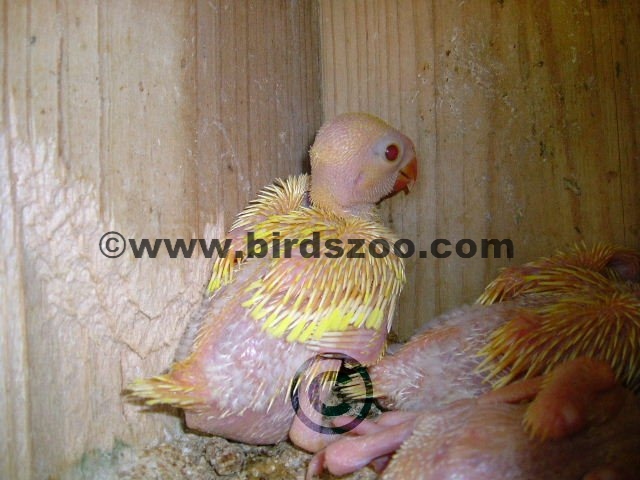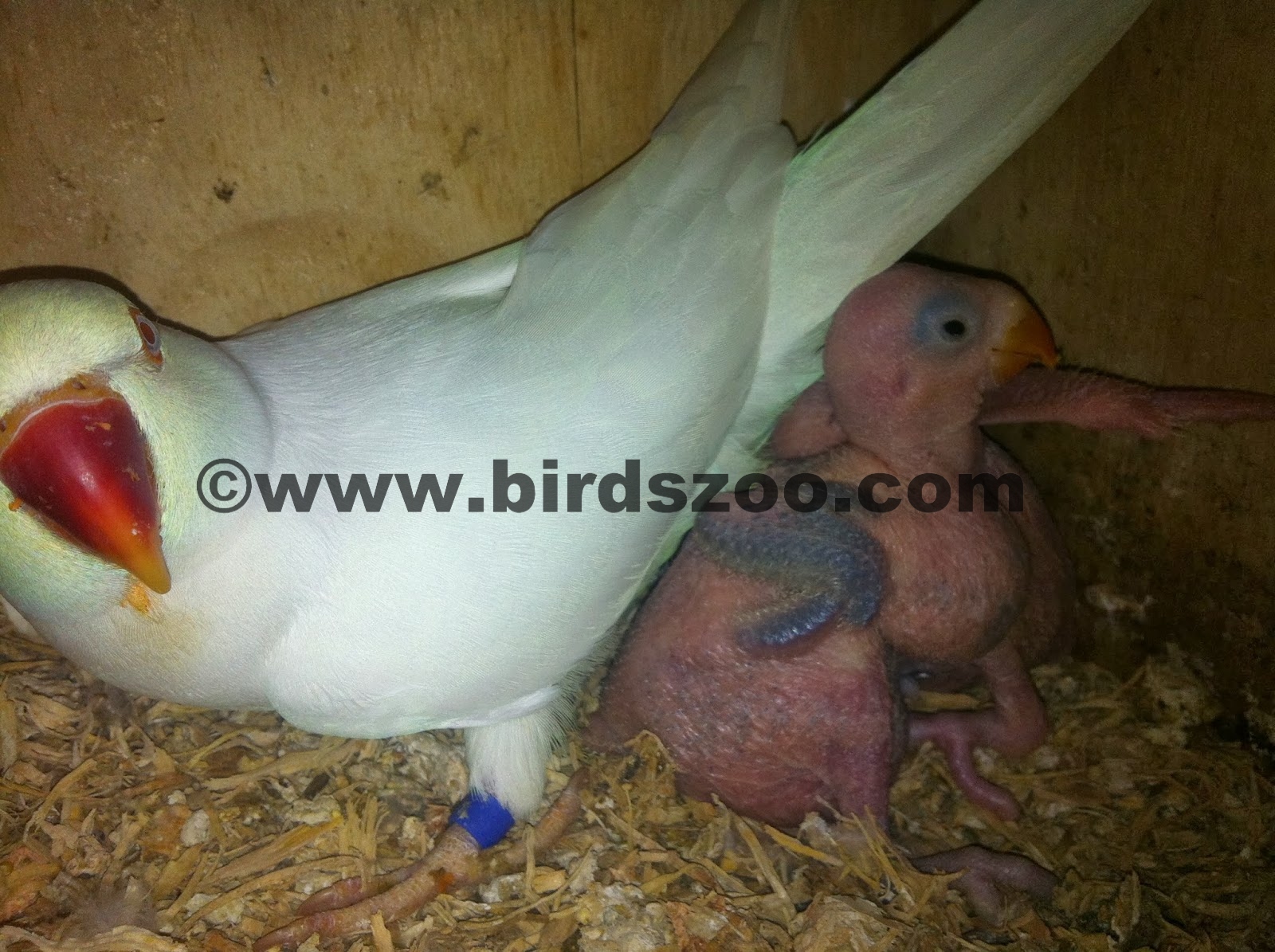Eggs & Hatching
 |
 |


Once the pair has selected a nesting site the hen will lay the eggs. The eggs, which are about the size of a quarter, are laid every other day until the clutch is complete. The clutch can range from 3 – 6 eggs and each egg is white.
You might be wondering why the eggs are white in color? It’s believed that becasue parrots nest in dark cavities, such as in trees, the color helps the hen locate each egg inside her nest.
Most Indian Ringneck pairs can produce up to two clutches of eggs a year in most breeding seasons. Some owners have claimed to produce three clutches; however, this is rare and is achieved by immediately removing the eggs as soon as the female Indian Ringneck has completed her clutch. If this method is practiced, adding extra supplements of calcium through mineral blocks and dark leafy greens is recommended.
The other more popular method, which is used for the pet trade, is removing the chicks at about 10 – 15 days from their nest. They are then placed inside a brooder, socialized, and handfed until weaned. This method will produce about two clutches a year and is the most typical scenario.
The final method is letting the parents raise their own chicks. If this method is practiced, chances are one clutch will be produced a year. The choice is yours.
Incubation is what starts the development of the chick. This process lasts 23 days. During this period the hen will sit on her eggs with minimal breaks. The female will leave the nest occasionally to stretch and eat. While incubating, the hen turns the eggs to ensure proper development of chicks and to prevent the embryo from growing incorrectly.
At about 1 – 2 days before hatching, the chick will make a small hole inside the egg. This allows the chick to take larger amounts of oxygen and begins the hatching process. During this process, extra moisture is required; especially if you live in dry areas such as deserts or in Southern California. To avoid problems during hatching, take a spray bottle and spray the outside of the nesting box. This helps to increase moisture and allows hatching to presume smoothly. Avoid spraying inside the box. The chick will begin the hatching process when it starts to make a hatch ring around the egg. This process takes about 15 minutes. During this time, the chick will maneuver itself around the egg until it has completed the ring.
Once the ring is complete, the chick will use its legs to push the egg into two sections. After completely pushing itself outside of the egg, the hen will dispose of the shells. If she does not, it’s a good idea to remove them; this prevents the excess shells from covering another egg and complications of other hatching chicks.


